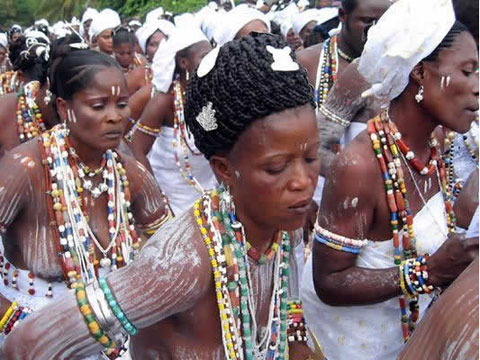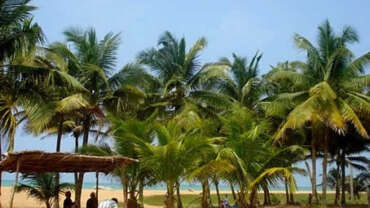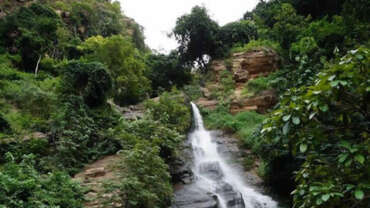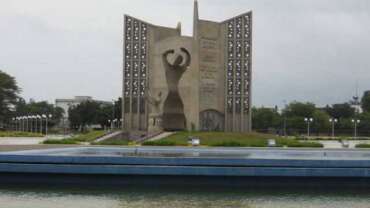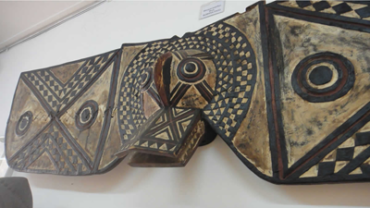Cultural Tourism in Togo
The Togo has a real heritage-listed World Heritage of UNESCO in 2004. This is the Koutammakou landscape , located in northeastern Togo and extending across the border to Benin , is home to the Batammariba whose remarkable earthen turret houses have become a symbol of Togo .
Activities related to World Heritage
The Koutammakou (Tamberma) landscape
Region: Kara
City: Kandé
The Koutammakou landscape , located in the northeast of Togo and extending across the border to Benin , is home to the Batammariba whose remarkable earthen turret houses have become a symbol of Togo. The site is classified as a UNESCO World Heritage Site. In this landscape, nature is closely associated with the rituals and beliefs of society.
The 50,000 ha cultural landscape owes its remarkable appearance to its Takienta , turreted houses that reflect the social structure, as well as to its agricultural lands and forests, and to the association between the people and the landscape.
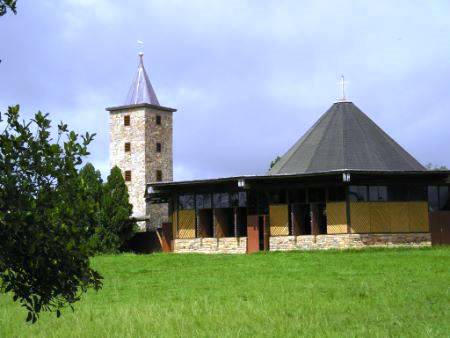
The Dayes plateau ( Danyi ): The Dzogbégan monastery : The Benedictine monks introduced different cultures to the region, including the variety of “ robusta ” coffee. They transform and market many of their products, like the Benedictines from the neighboring monastery : yogurt , jams , natural essences.
Activities related to Curiosities
The monastery of Dzogbégan (Danyi)
Region: Plateaux
City: Kpalimé
The monastery of Dzogbégan: The Benedictine monks introduced different cultures to the region, including the variety of “ robusta ” coffee. They transform and market many of their products, like the Benedictines from the neighboring monastery : yogurt , jams , natural essences.
Chapel: Circular wooden chapel, surmounted by a conical roof. This chapel was built entirely with local materials.
The Sarakawa monument
Region: Kara
City: kara
Sarakawa Monument: Monument built in commemoration of the plane crash of January 24, 1974 from which the late Head of State Gnasinbé Eyadema miraculously escaped. You can see the wreckage of the plane.
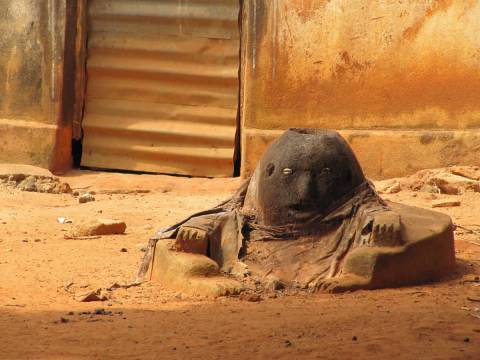
Discover the cultural and traditional diversity of Togo.
Traditional konkonba chiefdom
Region: Kara
City: Bassar / Bandjéli
You can visit Bandjéli , a very beautiful traditional Konkonba chiefdom. After the audience with the chief , visit the huts of his home which are very nicely decorated with paintings.
The traditional Chiefdom of Kparatao
Region: Centrale
City: Sokodé
Kparatao : Traditional chiefdom and Tem tombs. Do not miss to visit the traditional chief of Kparato (in the direction of Tchamba and Benin ) who reigns over the Tem who are spread over Benin , Togo and Ghana. We will also discover in certain private houses the graves of warriors to whom regular offerings are still made.
Traditional festivals and dances
Region: Centrale
City: Sokodé
The name Gadao-Adossa is the common expression to designate two major Tem festivals, namely Gadao for the Tem and Adossa for the strongly Islamized community of Didaoure.
The story of Gadao is linked to the gushing of an inexhaustible pond of water in a place which took the name of Tabalo and where the chief of the Mola had sunk , leaving a red Chechia there . From then on, the name of Gadao became a myth and is celebrated in order to thank the ancestors for the abundance of the harvests. Adossa is the knife dance performed by the Traoré , Touré , Mendè , Cissé , Fofana clans who inhabit Didaouré.
The Kabyés Mountains
Region: Kara
City: kara
Located to the east of Kara , in the direction of Benin , the Kabyés Mountains offer to discover the life of the local populations through magnificent tracks which cross many traditional villages. The mountainous landscapes offer splendid views over the plains.
Animist practices
Region: Maritime
City: Togoville
The practices and animistic beliefs are still deeply rooted in the daily life of local people. There are fetishes for each of the districts of Togoville. These are still used as evidenced by the many sacrifices placed at their feet. It is also not uncommon to see women go into a trance or meet the voodoo priests.
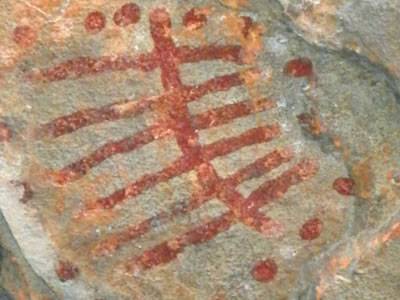
The Togo has a historical and cultural remarkable.
From the remains of the slave trade : Agbodrafo : Woold Home ), to buildings of colonial architecture : Lomé , Aného-Glidji , Kpalimé , Atakpamé , Sokodé, passing through the koutammakou landscape (classified as a World Heritage Site) ‘ UNESCO in 2004 ), the caves and granaries of Nok and Mamproug or the cave paintings of Namoudjoga and Sogou, the visitor will be able to discover a thousand and one wonders.
Activities related to Historical & Cultural Heritage
Buildings & Architecture in Aného
Region: Maritime
City: Aného
Aného is full of buildings whose architecture is characteristic of the colonial period ( 19th Century ). They bear witness to the past of the city which was the first capital of Togo and one of the main commercial centers of Togo.
Buildings & Architecture in Kpalimé
Region: Plateaux
City: Kpalimé
There are still a few buildings in Kpalimé dating from colonial times when the city was at the center of the coffee and cocoa trade . The German cathedral of Kpalimé also testifies to the colonial past of the city.
The governor’s house in Missahoe. The village of Missahoe is located on the road from Kusuntu to the village of Kuma-Konda. The old Governor’s House is characteristic of the architectural remains of the German colonial period. The governor’s house offers a splendid view of Kpalimé and the German cemetery.
Buildings & Architecture in Sokodé
Region: Centrale
City: Sokodé
Some buildings and remains from the German colonial period remain in Sokodé . the main ones are located on the Place de la Préfecture.
Buildings and Architecture in Lomé
Region: Maritime
City: Lomé
The colonial architecture was inspired by three architectural styles. The oldest of them is a transposition of European colonial architecture. The second style present is the “ Porto-Novo style ” derived from the Portuguese Baroque of Brazil. Finally, some buildings are a legacy of the English neo-classical style inspired by neighboring Ghana.
The German Cathedral of Lomé
Region: Maritime
City: Lomé
The German Cathedral in the city center is the appropriate place to start a city tour. Its ornate arrows , beautifully painted facade and interior , carved wooden benches and frescoes depicting African saints are living memories of Togo’s colonial heritage.
Notre Dame du Lac Togo Cathedral
Region: Maritime
City: Togoville
The Cathedral of Our Lady of the Lake Togo was built in 1910. It is adorned with paintings of African martyrs. There is a reproduction of the boat on which the Virgin Mary appeared on the lake in 1940.
The House of Slaves – Wood Home – The well of the chained
Region: Maritime
City: Agbodrafo
” Wood Homé “, according to the local name, is the home of Wood , an English trader and slave trader.
This house was built shortly after the installation in Agbodrafo in 1835 of a fraction of the Adjigo clan driven out of Aného and led by Chief Assiakoley .
Accustomed to the practice of slavery on the coasts of Aného , the chief and his notables could not abandon this lucrative trade despite the injunctions of the Western powers and the surveillance of anti-slavery cruises in the Gulf of Benin .
The Château Viale
Region: Plateaux
City: Kpalimé
Direction Togo and Kpalimé 120 km north-west of Lomé , a few kilometers from its border with Ghana .
Above Kpalimé , a large town, is Mount Kloto, where Château Viale , presidential residence since 1975, sits enthroned .
In 1940, during a horseback ride , a German named Viale discovered this hill, facing Mount Kloto , and was amazed by the panorama offered by this site.
He decided to build a castle there . This castle built during the Second World War , began in 1940 , and was completed in 1944 , at a time when no tarmac road served neither Mount Kloto , nor a fortiori its summit.
The Governors Palace
Region: Maritime
City: Lomé
The Palace of the Governors was built from 1898 to 1905 under the technical direction of engineer of German work FURTKAMP , following the decision of the Governor August KOHLER – one who erected Lome in capital of Togo – to build a palace rather representative that is recognizable from a distance of a thousand kilometers in order to impress the boats .
The so-called ” head-up ” architecture not only recalls at first glance that of the metropolis, whose aura it reflects, but it also rhymes – proudly – with the rating of ” the model German colony ” that constituted the Togo at the time.
The Royal Palace of King Mlapa
Region: Maritime
City: Togoville
Meeting with the descendants of King Mlapa who in 1884 signed the treaty with Doctor Nachtigal which will give the Germans hegemony over Togolese territory. Justice is still rendered there every Saturday morning according to customary law.
The caves of Nok and Maproug
Region: Savanes
City: Dapaong
High cliffs, whose walls face north, dominate the savannah of this northern part of Togo. They are the last high reliefs before this immense expanse of savannah which extends into Burkina Faso . This formation commonly known as Boumbouaka sandstone presents escarpments of cliffs of Upper Proterozoic age of rare beauty with at the base an alternation of pellites ( argillites ) and psammites , the whole resting on a crystalline base dating from the Birrimian .
Horizontal crevices open at the last upper quarter of their height; difficult to access, they have served, for a very long time, shelter and refuge for indigenous populations during the various periods of insecurity that plagued the region from the 17th to the 19th century.
The blast furnaces of Bassar & Bandjéli
Region: Kara
City: Bassar / Bandjéli
The soil of Bassar , like that of Bandjéli, concealed iron ores which were exploited very early on by the local populations. The region is renowned for its smelting technique and for its blacksmiths. Before independence there were more than 500 stoves in the region.
The rock paintings of Namoudjoga & Sogou
Region: Savanes
City: Dapaong
Until their discovery in 1990 by missionaries , nothing indicated the presence of the paintings in this region.
They are located in the Sodjoual mountains in Sogou , in the canton of Naki , and the Namoudjoga mountains . Sodjoual presents three painting stations , made on rock faces. There are three rows of very distinctly distinct morphological characters: several horizontal lines separated by a vertical median. One can notice, without difficulty, some animal forms.
There have been counted more than sixty-three groups of signs composed of vertical and horizontal lines, lines of dots, circles and isolated dots. There are also riders and animal figures.
The ruins of Kamina
Region: Plateaux
City: Atakpamé
The ruins of Kamina : Located 20 kilometers from Atakpamé , Kamina is the site of the former German military base. The walls of the headquarters are still erected as well as the concrete pylons which supported the antenna of a giant radio transmitter which linked Togo to Berlin and to the German fleet in the South Atlantic.
The remains of the Ewe kingdom
Region: Maritime
City: Notsé
There are still some rare vestiges dating from the kingdom of Notsé. The walls. Only a few fragments remain, which are protected given the erosion of time. It was King Agokoli ( probably at the beginning of the 17th century) who had them built using clay kneaded with water. Notsé will then become a fortress where the Ewe took refuge but also other peoples such as the Akposso Pavements. Archaeological excavations have uncovered pavements dating from an ancient era. These were protected within the confines of a small building.
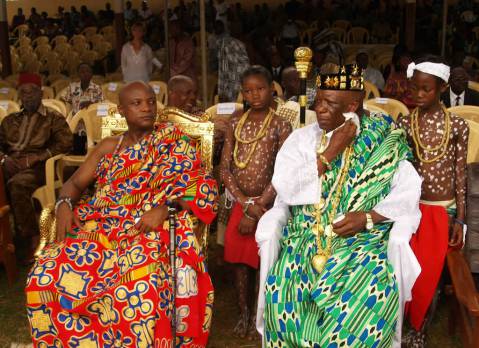
TRADITIONAL FESTIVITIES
Live in the heart of the rites & traditions among the most authentic in West Africa !!! The TOGO has a very diverse ethnic and cultural. This richness is expressed through the festivals and traditional rites that punctuate the life of each of the communities. These are generally linked to the oldest and most deeply rooted beliefs and traditions within the local populations. The TOGO offers some traditional festivals of exceptions: Epe-Ekpe ( taking the sacred stone ): New Year in Guins , Gadao-back against : Knife festival in TEM , Evala : the struggles traditional Kabyés …
Activities related to Traditional Festivities
Agbogbo-Za (Historical festival of the Ewe)
Region: Maritime
City: Notsé
Agbogbo-Za ( Historical festival of the Ewe ). More than a ritual feast, Agbogbo-Za is the biggest traditional feast of the Ewe people. It marks the commemoration of the exodus of the Ewé people in the 17th century. The first ritual ceremonies begin on the 1st Thursday of September and the climax takes place the following Saturday. The apotheosis takes place on the 1st Saturday of this month in the same city.
Ayiza (Harvest Festival in Zio)
Region: Maritime
City: Tsévié
According to the history of the Ewé people , the founders of the city of Tsévié, emigrating to the south (exodus from Notsé which dates back to 1720 ), tired and destitute, decided to sow beans. When it was time to get back on the road, the sowers protested, demanding to wait for the harvest. From there came the current name of Tsévié formed of ” Tsé ” (to produce) and vié (a little). Ayiza owes its name to the ” Ayi ” bean and is celebrated every year on the 2nd Saturday of August in Tsévié.
D’pontr / N’dack
Region: Kara
City: Bassar / Bandjéli
It marks the beginning of a new year in Bassar and Konkomba country. The yam cultivation in the region remains the key element around which we find the meaning of D’pontr and N’dack. D’pontr and N’dack give the Bassar man or Konkonba the opportunity to appreciate the fruit of his labor of the year and allow him to offer the first fruits to the gods and the manes of the ancestors in sign of recognition. It is celebrated each year on the 1st Saturday of September alternately in Bassar and Guérinkouka.
Dzawuwu-za (Harvest Festival of Ewé de Kloto)
Region: Plateaux
City: Kpalimé
It is a cultural practice that is based on ancestral beliefs in the Kloto region. It is also a party in which in ancient times was spread to the intention of the gods and the spirits of ancestors dishes prepared with the beginnings of some crops ( maize , cassava , yam ,.). It is celebrated every year on the 1st Saturday of August in Kpalimé.
Sword Ekpé
Region: Maritime
City: Aného
Epe – Ekpé (historical festival of the Guins ). This is probably one of the most important ceremonies of the whole of Africa from the West. Specific to the Guens who came from Ghana in the 17th century to settle in the lakes region in 1663 , Epe-Ekpé is the occasion for the taking of the sacred stone ( Kpessosso ) which remains the core around which all events revolve.
Evala
Region: Kara
City: kara
Evala ( Initiation party in Kabyé country ). Evala is the feast of wrestling in Kabyé country. It is the occasion for the young evalou to distinguish themselves among its co-initiates by their strength, their endurance and the elegance of their dance. This ritual initiation ceremony, which is performed individually from house to house in January, allows 18-year-olds to join the adult class. the final ceremonies begin on July 11, 12, 13 and 14, which coincides with the 2nd Saturday of that month each year. They last a week and take place in all the cantons of the prefecture.
Gadao-Adossa (Festival of knives)
Region: Centrale
City: Sokodé
The name Gadao-Adossa is the common expression to designate two major Tem festivals, namely Gadao for the Tem and Adossa for the strongly Islamized community of Didaouré. The story of Gadao is linked to the gushing of an inexhaustible pond of water in a place which took the name of Tabalo and where the chief of the Mola had sunk , leaving a red Chechia there. From then on, the name of Gadao has become a myth and is celebrated in order to thank the ancestors for the bountiful harvest. Adossa is the knife dance performed by the Traoré , Touré , Mendè , Cissé , Fofana clans who inhabit Didaouré.
Habye
Region: Kara
City: kara
Habye ( Religious festival of the Kabyé of the Kozah ). It is a magic demonstration dance . This is the opportunity to demonstrate the occult strength of wizards. It offers only initiates the opportunity to prove to each other a mastery of the forces of nature. It takes place every 5 years in November. It is also triennial in certain cantons of Kozah.
Kamaka
Region: Kara
City: kara
Kamaka ( Assoli TEM Harvest Festival ). Originally, Kamaka means in the TEM language ” the hammock ” which was used to transport as a sign of homage the one who during the year distinguished himself by a great harvest and who moreover helped the poor by donations. of agricultural products. It is also a mark of gratitude to the ancestors for having given the TEM people of Assoli abundant harvests. The ceremonies take place on the 2nd Saturday of December each year in Bafilo.
Kilikpo (Harvest Festival in Tchamba)
Region: Centrale
City: Sokodé
Kilikpo ( Harvest Festival in Tchamba ). It is the feast of bountiful harvests and the dawn of a stupendous era. It is marked by the consumption of the new yam and is surrounded by a ritual consisting of offerings to the divinities: manes , twins , protective spirits. It is celebrated in Tchamba every year, on the 1st Saturday of August which thus passes to be a month of providence , abundance and sanctification.
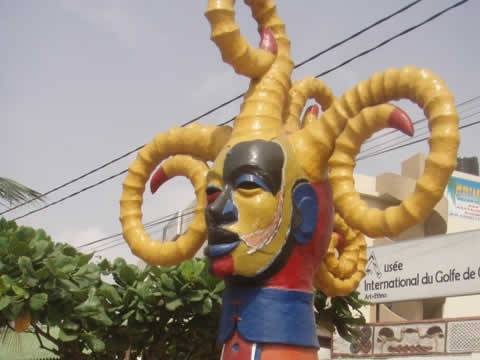
MUSEUMS
The National Museum and the International Museum of the Gulf of Guinea are the two main museums in the capital. In the interior of the country, do not miss the museums of the central region and the savannas which offer very beautiful pieces related to the life of the local populations.
Activities related to Museums
The National Museum
Region: Maritime
City: Lomé
Lomé has a fascinating national museum. It is located in the Palais des Congrès near Independence Square , opposite the hotel February 2. This museum is the ideal place to discover Togolese culture . Inside, well-lit display cases tell the local history and display excellent specimens of traditional art.
The Regional Savannah Museum
Region: Savanes
City: Dapaong
Opening hours: Tuesday to Friday : 9 a.m. to 12:30 p.m. and 3 p.m. to 6 p.m. – Saturday : 9 a.m. to 1 p.m.
International Museum of the Gulf of Guinea
Region: Maritime
City: Lomé
Founded by René David and his wife Enam Ekpe , the International Museum of the Gulf of Guinea houses a large part of the private collection of the great dealer and collector René David, born in 1928 in Basel , Switzerland. He returned to Africa in 2006 most of his own collection to be exhibited in Lomé. The museum brings together a collection of more than 1500 pieces covering the period: 2 centuries BC , until the beginning of the 20th century.
Regional Museum of the Center / Sokodé
Region: Centrale
City: Sokodé
Regional Museum of the center / Sokodé. Open Monday to Friday from 7 a.m. to 12 p.m. and from 2:30 p.m. to 6 p.m. The museum offers some very beautiful antique pieces and everyday objects representing TEM life and culture.



